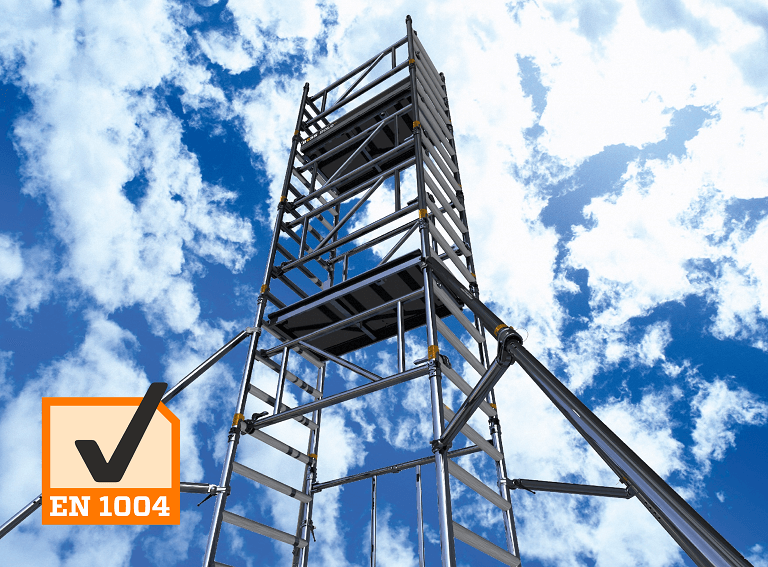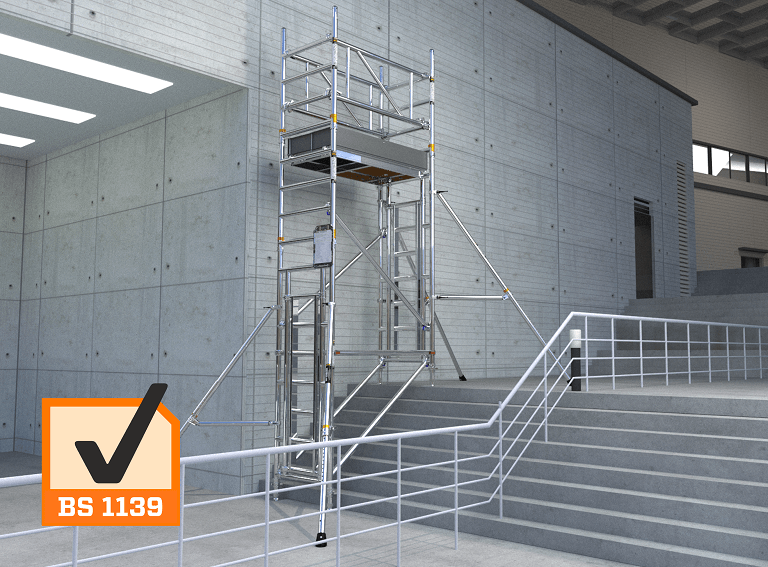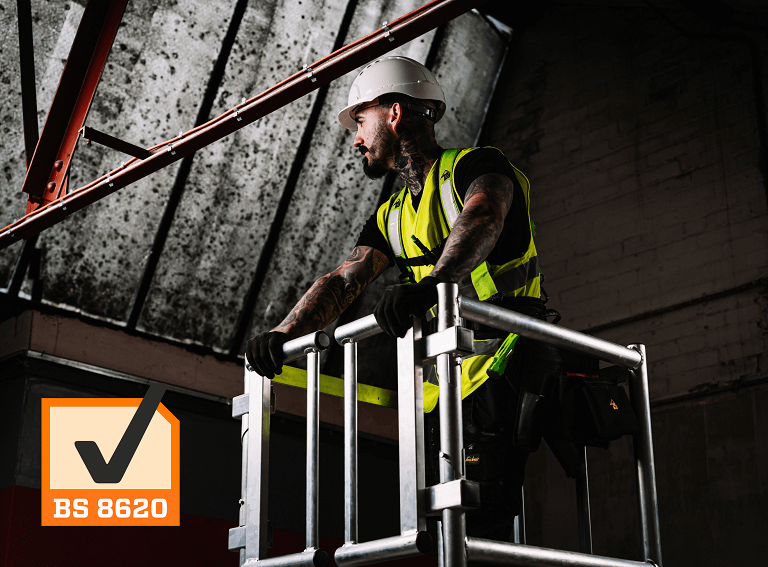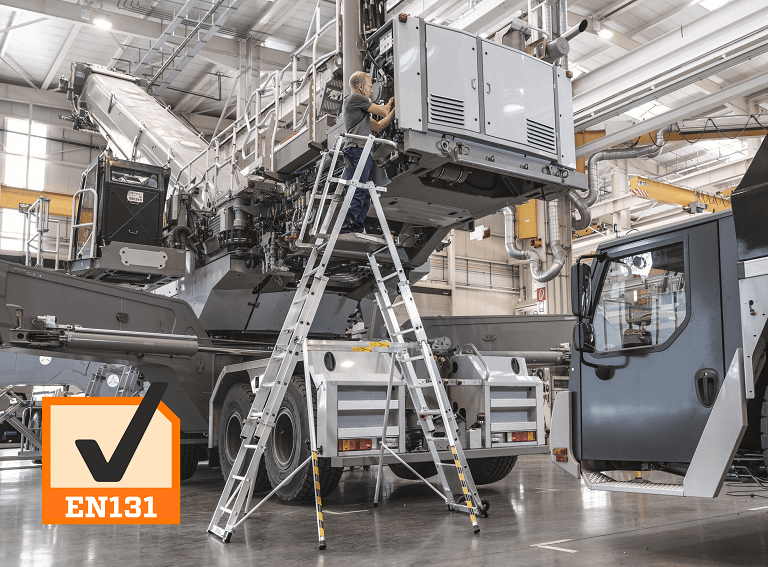Safety Standards Explained
Our standards demonstrate our commitment to ensuring BoSS products have gone through rigorous testing to provide maximum safety for the end user.
There are separate requirements for mobile access towers and working towers (EN 1004, BS 1139), BoSS Podiums (BS 8620:2016) and TeleguardPLUS (EN131).
EN 1004 and BS 1139
EN 1004 is the European product standard for mobile access and working towers aimed at enhancing safety and stability, particularly at lower heights, and with safer spacing requirements between platform levels.
- Stability Test
Towers are subjected to stability tests to ensure they remain stable and secure during use, especially at low heights. - Platform Load Test
The load-bearing capacity of the platforms is tested to ensure they can safely support the intended load. - Guardrail Load Test
The guardrails are tested to ensure they can withstand the required load without failure, providing adequate protection for users. - Climbing Test
Towers are tested for ease of climbing and descent, ensuring safe access and egress for users. - Structural Integrity Test
The overall structure of the tower is tested to ensure it meets strength and durability requirements, providing assurance of safety and reliability during use.

BS1139 specifies quality and safety standards for prefabricated tower scaffolds outside the scope of EN 1004. This includes towers with cantilevers, linked towers, towers with bridges and large deck towers.
- Material Quality Test
Testing the quality and strength of materials used in the construction of the tower components. - Load Capacity Test
Testing the tower's ability to support specified loads safely without deformation or failure. - Stability Test
Ensuring the tower remains stable and secure during assembly, use, and disassembly. - Structural Integrity Test
Testing the overall structure of the tower to ensure it meets strength and durability requirements. - Corrosion Resistance Test
Testing the tower's resistance to corrosion, ensuring longevity and safety in various environments.

BS 8620:2016
BS 8620 is a British regulation that applies to low-level work podiums with a single working platform equipped with side protection, for use by one person and with a maximum working platform height of less than 2.5m.
The key requirements for passing the BS 8620 test include robust construction to ensure stability, secure side protection to prevent falls, non-slip surfaces for safe footing, and clear labelling for proper identification and usage instructions. Additionally, adherence to load capacity limits and rigorous testing for durability are essential to meet the standards set by BS 8620.

EN131 for TeleguardPLUS
The EN131 standard is an industry-standard that specifies safety requirements and test methods for portable ladders, steps, and platforms. It ensures that these products are designed and manufactured to meet stringent safety criteria, providing users with confidence in their reliability and safety during use.
- Static Load Test
The ladder is subjected to a specified static load to assess its strength and load-bearing capacity. - Dynamic Load Test
The ladder is subjected to dynamic loading to simulate the impact of a person climbing or descending the ladder. - Slip Test
The ladder's rungs or steps are tested for slip resistance to ensure safe footing for users. - Stability Test
The ladder is tested for stability to ensure it remains secure and steady during use. - Functionality Test
Various functions of the ladder, such as locking mechanisms and hinge joints, are tested for proper operation and durability. - Durability Test
The ladder is subjected to repeated cycles of loading and unloading to assess its long-term durability and reliability.

